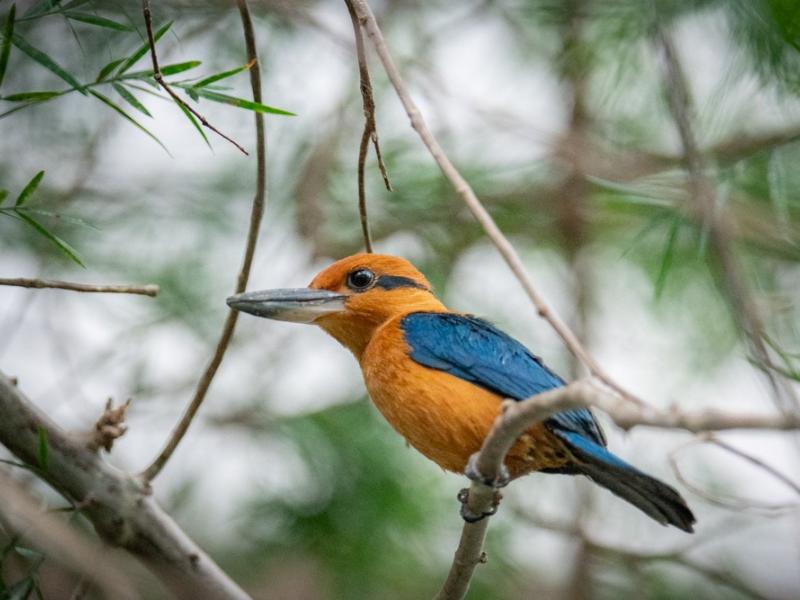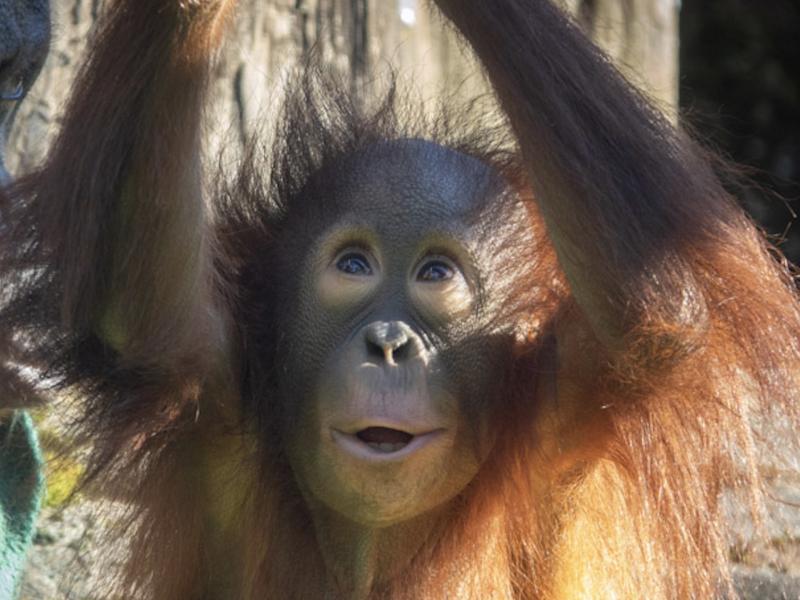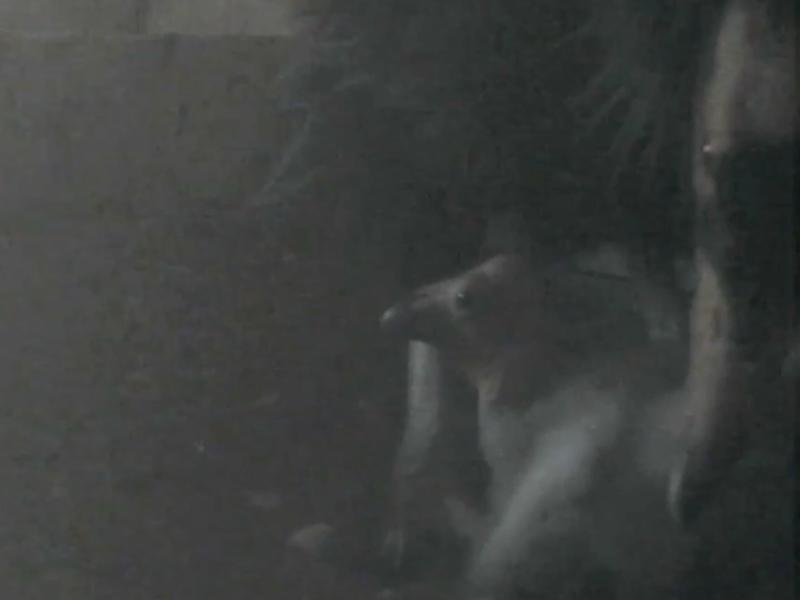Veterinary Spotlight: Q&A with Heather Brittingham

Vet tech Heather Brittingham joined the Oregon Zoo in March 2019. She proudly identifies as a “laboratory nerd” and enjoys the challenges and puzzles she encounters in a zoo veterinary setting. In addition to her full-time job, she is completing her master's degree in biology from the University of Miami.
What does a “typical” day at work look like?
One of my favorite things about this work is that there is no typical day! Mornings start with checking on any quarantined or hospitalized patients and setting up for the day’s procedures with equipment checks, filling prescriptions and updating zoo staff before the veterinarians arrive. During exams, I assist with anything that may be required, including monitoring anesthesia, collecting biological samples, obtaining diagnostic imaging. Once the morning’s clinical work is complete, the cleanup takes nearly as long as the procedures.
Most afternoons are spent in the lab, one of my favorite rooms, to process the samples gathered that day. I find it fascinating how much a single layer of blood under the microscope will tell us about the overall well-being of an animal.
The last part of my day is often spent setting up supplies and equipment for the next day’s clinical work — and of course this is zoo medicine so everything can change from one moment to the next.
What is the biggest misconception about your work?
A few years back, I was giving my family a tour of the hospital I was working in at the time. Halfway through my spiel about anesthesia, my father-in-law stopped me and said, “Heather, I had no idea you did all of this. This is incredible!” This was a man I’ve known for over half my life. With so many different aspects to my job, it’s often difficult to explain the whole picture, even to my family.
What inspired you to choose zoo veterinary medicine?
At the end of the day, what inspires me to be here is wildlife conservation and the role that veterinary medicine plays within that.
What was your most exciting moment on the job?
Working with keepers on voluntary behaviors for medical purposes is incredibly rewarding. I love going to work with an animal, making them comfortable so they will allow us to give injections or obtain blood. The Oregon Zoo’s history and reputation for this type of training is one of the things that attracted me. It’s amazing what animals will allow us to do if we just ask patiently and move at their pace.
Has a gift or donation to the Oregon Zoo Foundation ever impacted your work?
Earlier this year, a grant from the M.J. Murdock Charitable Trust allowed for the purchase of a blood-banking centrifuge. Processing a plasma sample or packed red blood cell sample before would have taken at least 24 hours. This is not time we can afford when a lifesaving procedure like a transfusion is necessary. Now I can have a sample processed in less than an hour. The centrifuge has also allowed us to start collecting and cryobanking plasma for future emergencies. This machine is literally a lifesaver.
What do you do for fun when you’re not working at the zoo?
Aside from exploring our new city with my husband and friends, I try to paddleboard as much as possible. It’s a new hobby for me, and I enjoy being on the water among the incredibly beautiful forests here in Oregon. Reconnecting with lifelong friends on the coast while splashing in the water (in wetsuits) at the beach or in the river is also a highlight of our new life out here!
More News

Zoo welcomes ultra-rare sihek kingfishers
The Oregon Zoo is home to many critically endangered species, but perhaps none as rare as its newest arrivals: a trio of sihek kingfishers.April 25, 2024

Jolene turns 2: Zoo to celebrate orangutan's 2nd birthday
The littlest member of the orangutan family is celebrating a big milestone this week: Jolene will turn 2 on Saturday.April 12, 2024

Seven chicks and counting: Zoo welcomes first condors of 2024
Seven fluffy chicks hatched last month at the Oregon Zoo’s Jonsson Center for Wildlife Conservation.April 5, 2024

